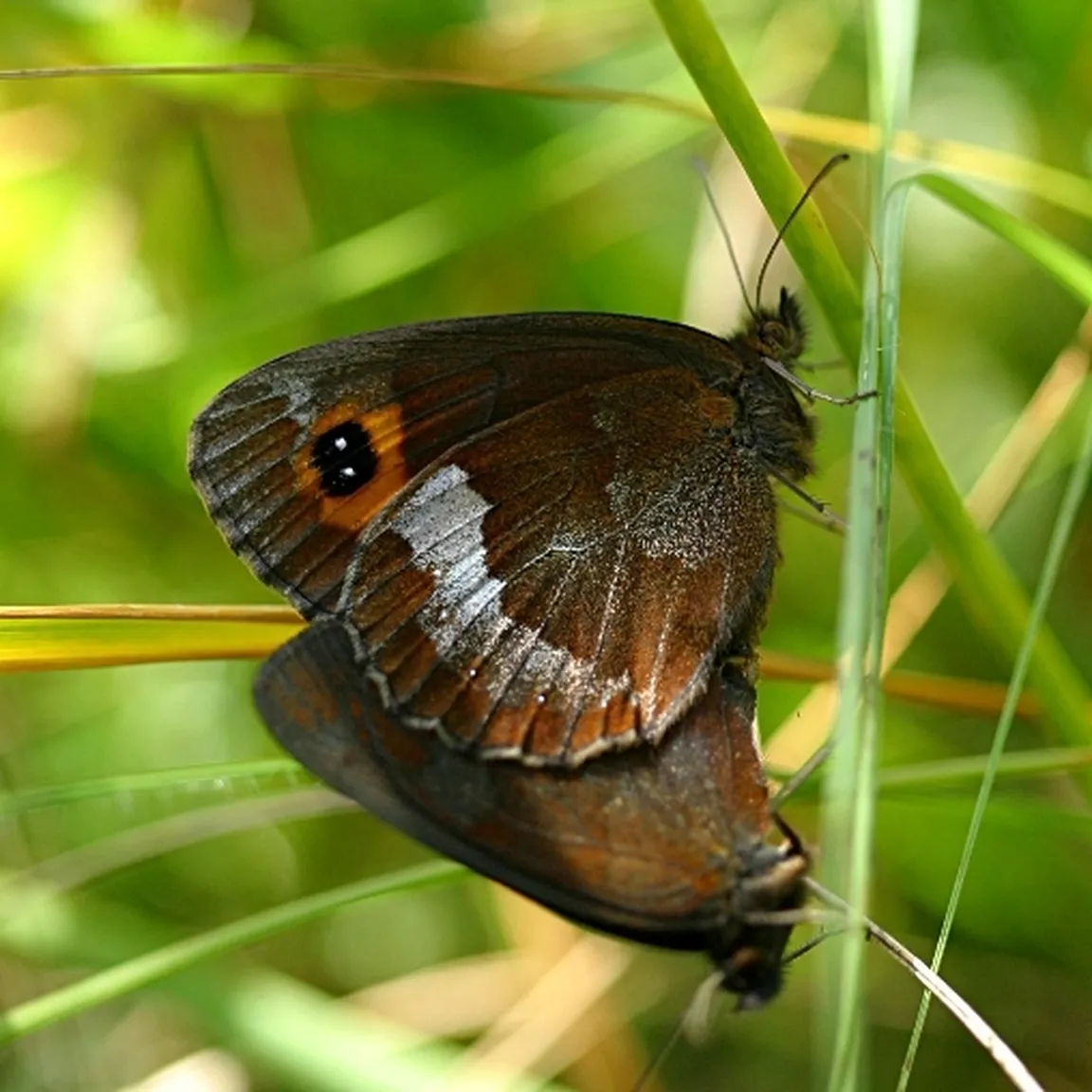Wingspan: 40–50 mm
Flight period of butterflies: in one generation from July to September
Host plants of caterpillars: Species from the grass families (Poaceae) and sedges (Cyperaceae)
The forest brown butterfly (Erebia aethiops) is quite large, a chestnut-brown butterfly. Along the outer edge of the upper side of the forewings it has a broad orange band with three (male) or four (female) black eye-spots with a white center. The eye-spots are larger in the female than in the male. On the hindwings on the upper side both sexes have four such eye-spots, each with a broad orange margin. The underside of the wings is brown; on the forewings along the edge there is an orange band with three conspicuous black eye-spots with a white center; the upper two eye-spots stay very close together. The hindwings are underside white-dusted, the dusting along the wing margins is condensed into a more or less conspicuous broad band. Along the outer edge of the hindwings on the underside there is also a row of small black eye-spots with a distinctly white center.
The forest brown is a common summer species, which prefers to stay along the forest edge and in forest clearings, mainly from 300 to 1500 m above sea level.


